

Matt Campbell
2026 Hyundai Tucson Hybrid review
6 Hours Ago
With a touch more tech and a new variant in the mix, the 2021 Mazda CX-3 plays to its core strengths though it's really showing its age.
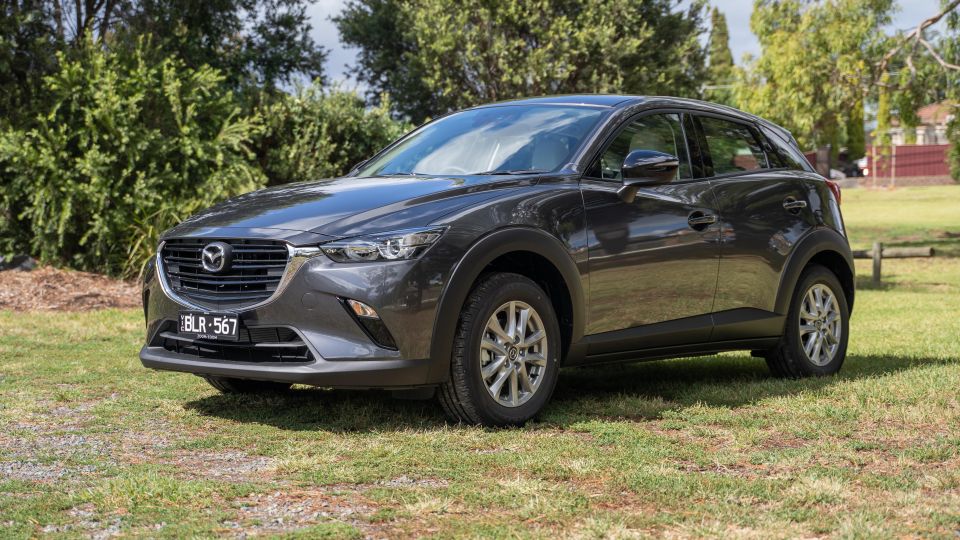
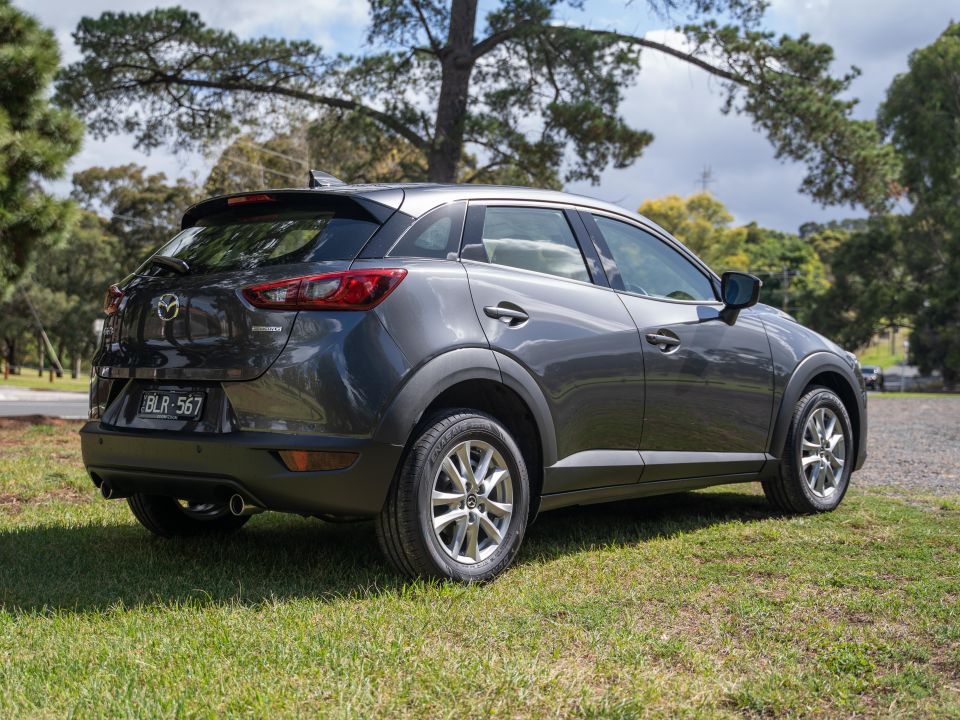

Marketplace Editor
New from
$26,890
excl. on-roads

Marketplace Editor
New from
$26,890
excl. on-roads


Marketplace Editor
New from
$26,890
excl. on-roads

Marketplace Editor
New from
$26,890
excl. on-roads
Quickly see how this car stacks up against its competition. Select any benchmark to see more details.
Where expert car reviews meet expert car buying – CarExpert gives you trusted advice, personalised service and real savings on your next new car.
The Mazda CX-3 is a household name these days, as a long-time favourite in the compact SUV segments.
It consistently tops the new Light SUV class, and for a long time duked it out with the Mitsubishi ASX for leadership of the Small SUV segment.
Seven years after it was revealed, the first-generation CX-3 is nearing the end of its life – but its popularity doesn’t seem to be dropping off at all.
For 2021, the company mildly refreshed the line-up in Australia with a new variant and enhanced specification across the range. How does it fare?

The 2021 Mazda CX-3 line-up kicks off at $22,890 before on-road costs for the entry-level Neo Sport manual, jumping to $38,690 before on-roads for the flagship Akari LE AWD.
On test we have the new variant for 2021, the CX-3 Maxx Sport LE, priced from $27,640 before on-roads. This model is auto and front-wheel drive only.
Mazda lists a national price of $30,490 drive-away for the vehicle we have here.
This mid-grade is priced against a number of Light and Small SUV competitors, including the likes of the Ford Puma FWD ($29,990), Skoda Kamiq 85TSI (from $27,990 drive-away), Toyota Yaris Cross GXL FWD ($29,990) and Volkswagen T-Cross 85TSI Life ($28,390).
If you’re looking at something a little larger, you can get yourself into a Kia Seltos Sport ($31,290 drive-away), Mitsubishi ASX LS ($28,490), or even Mazda’s own CX-30 G20 Pure (from $28,990).
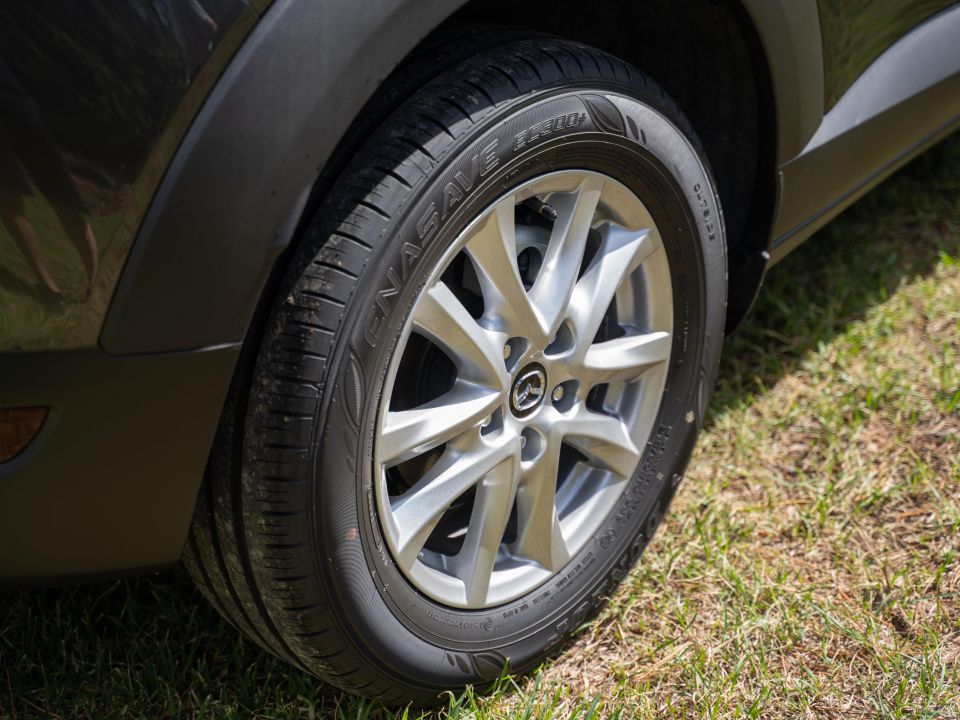
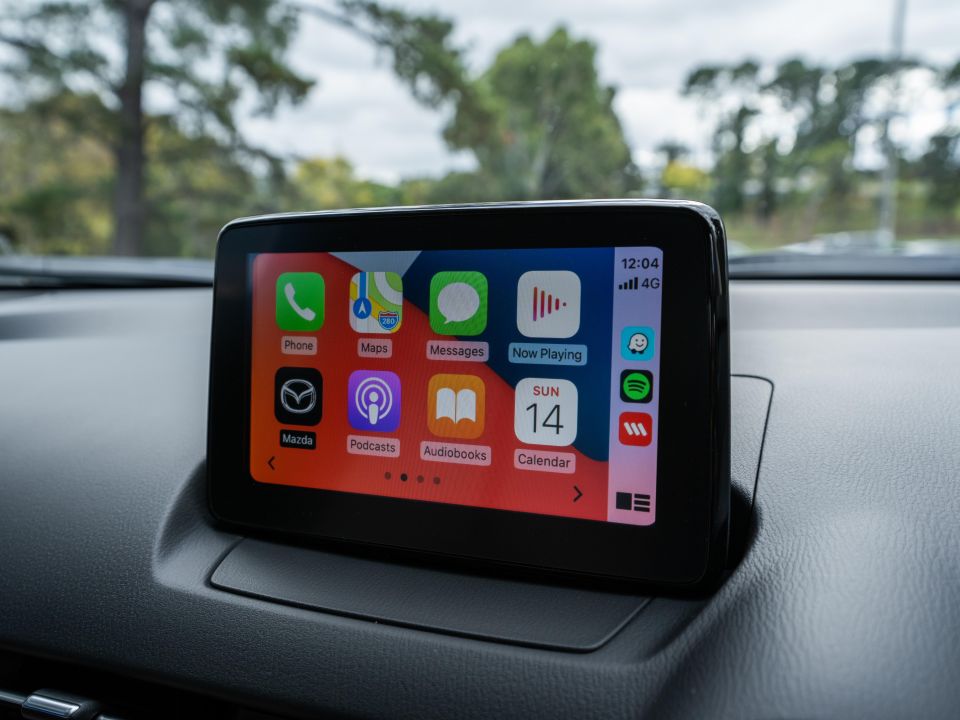
Buy your new car without the stress. It's fast, simple and completely free.

Great service from Travis and team, second time I have used this business would not hesitate to recommend them to anyone
Craig C.
Purchased a Ford Ranger in Sunshine Coast, QLD
CarExpert helped Craig save thousands on his Ford Ranger, now let us save you on your next new car.
Find a dealOpting for the CX-3 Maxx Sport LE brings the following exclusive equipment:
That’s on top of the Maxx Sport grade’s fairly healthy standard inclusions:
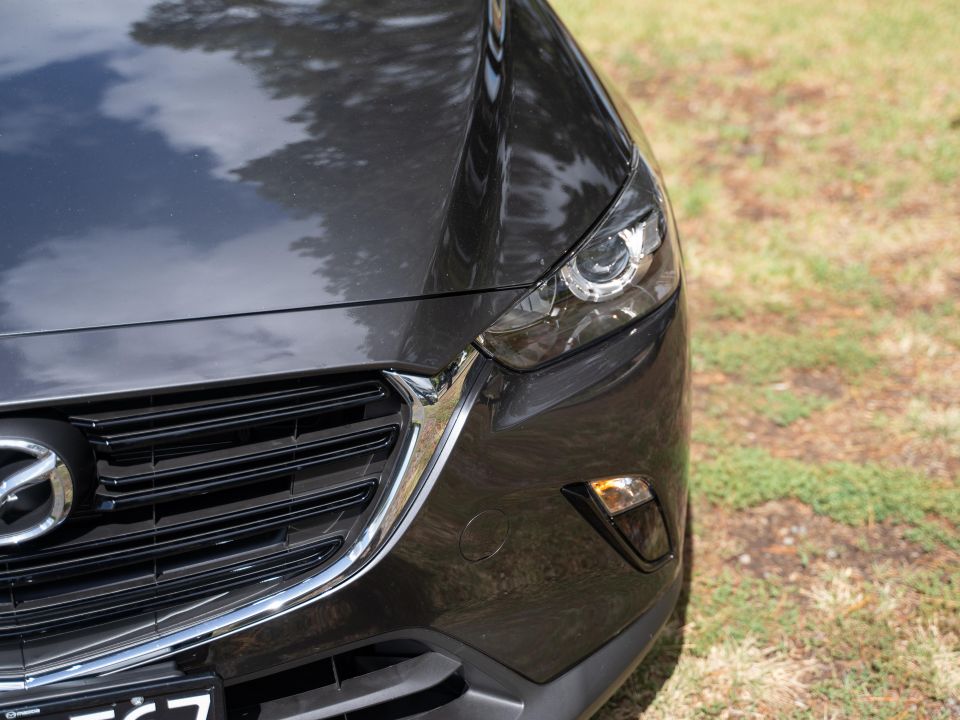
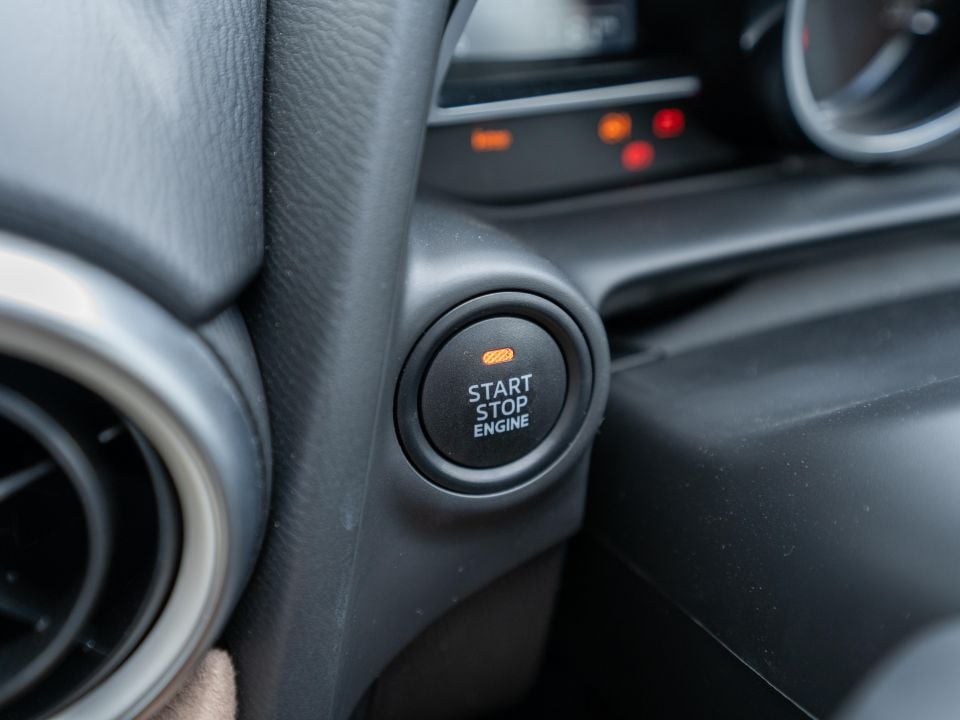
At the base level (Neo Sport), the following equipment is standard:
MORE: 2021 Mazda CX-3 price and specs
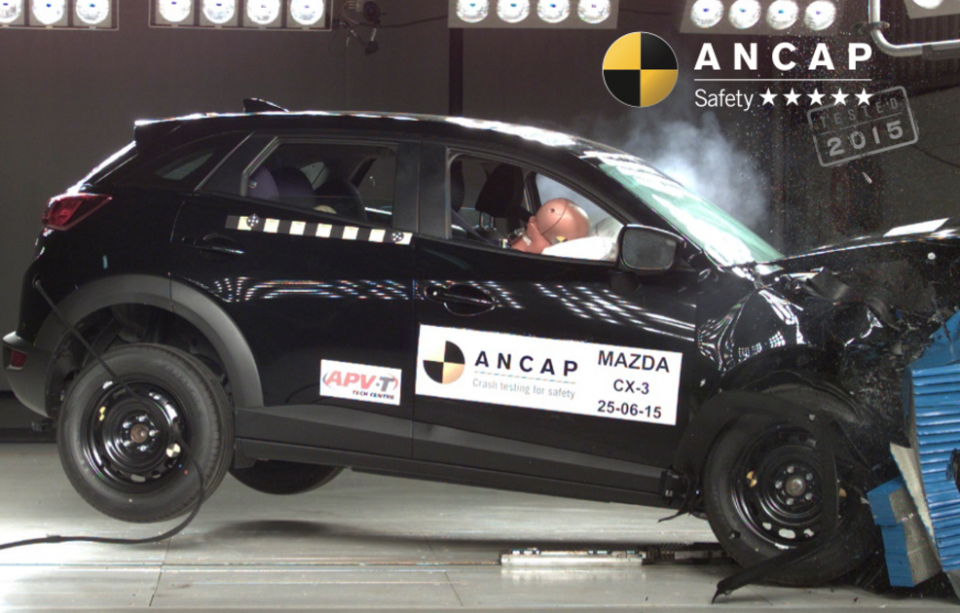
The Mazda CX-3 wears a 2015-stamped five-star ANCAP safety rating.
It scored 36.44 out of 37.00 points against older testing criteria, including perfect scores in the Side Impact and Pole tests, and 15.44 out of 16.00 in the Frontal Offset assessment.
For 2021 all models get an upgraded autonomous emergency braking system (4-80km/h for vehicles) which sees the addition of night-time pedestrian detection to the existing daytime function.

Other 2021 upgrades include an auto-dimming rear mirror for the Maxx Sport and Maxx Sport LE, as well as auto high-beam and lane-departure warning for the sTouring.
Other range-wide safety technology includes a reversing camera with rear parking sensors, in addition to dual front, front-side and side curtain airbags.
Maxx Sport variants and above score blind-spot monitoring and rear cross-traffic alert, in addition to automatic headlights.
For auto high-beam, lane departure warning, driver attention monitoring and traffic sign recognition you’ll need to step up to the mid-range sTouring at a minimum, while the Akari gets adaptive cruise with stop/go, adaptive LED headlights, and a 360-degree camera system.
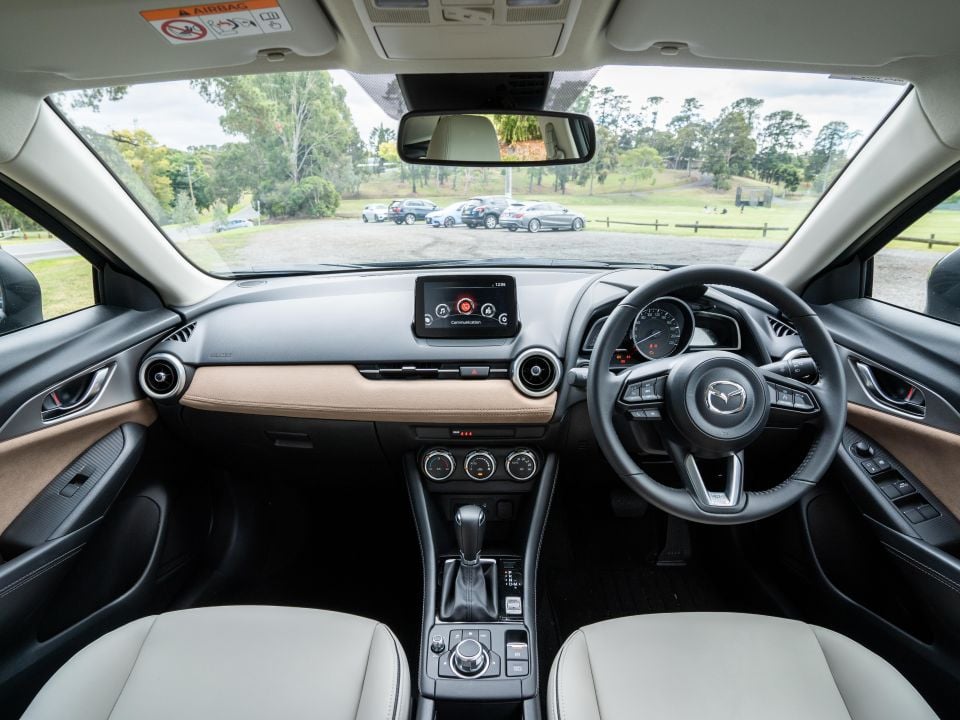
If you’ve ever sat in an old CX-3, or a Mazda 2 for that matter, it’s more of the same in the cabin.
Other than some changes to the centre console design and a steering wheel change around 2017, the CX-3’s interior is pretty much the same as when it launched.
That means a clean, interesting design and a mix of padded surfaces and hard plastics – though that’s not really out of place for the segment.
Sitting front and centre is the 7.0-inch MZD Connect infotainment system with satellite navigation – probably the most dated aspect of this cabin – which also includes wired Apple CarPlay and Android Auto as standard across the range for 2021.
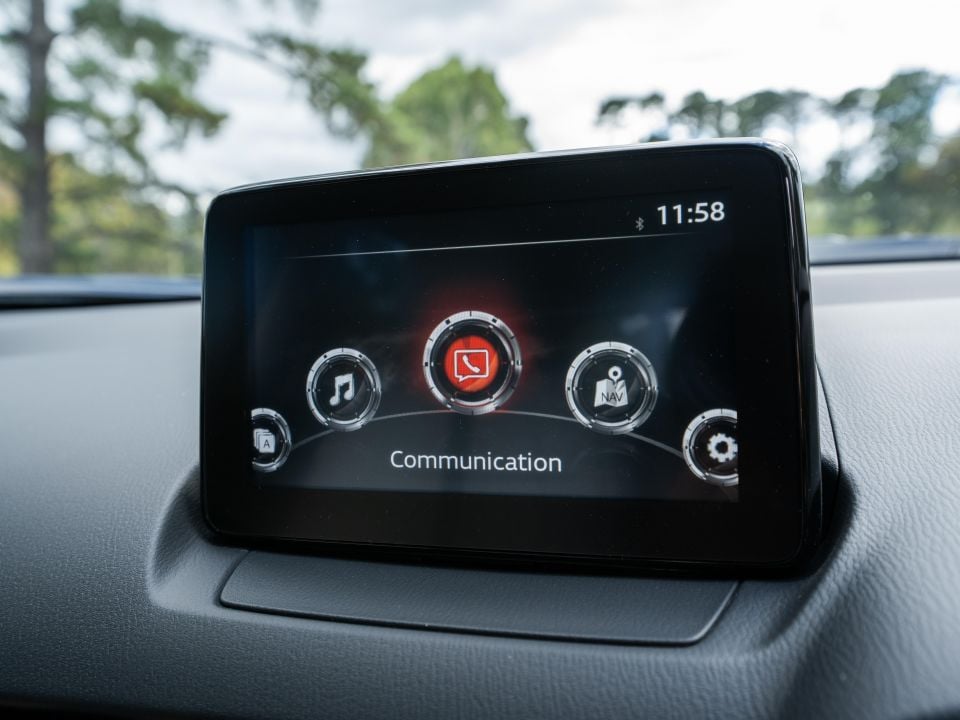

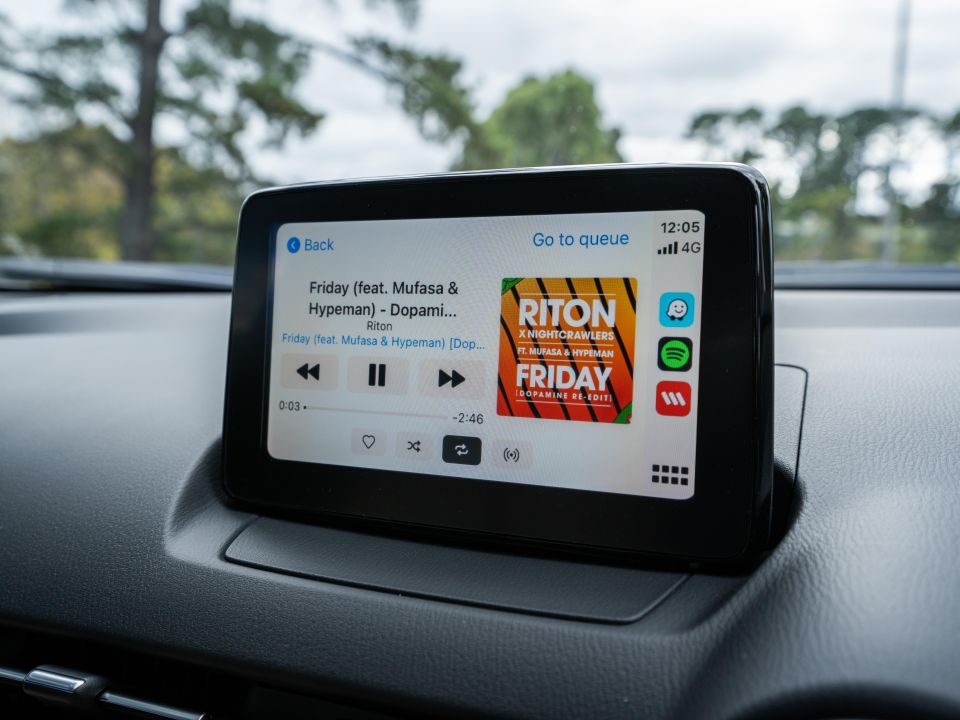
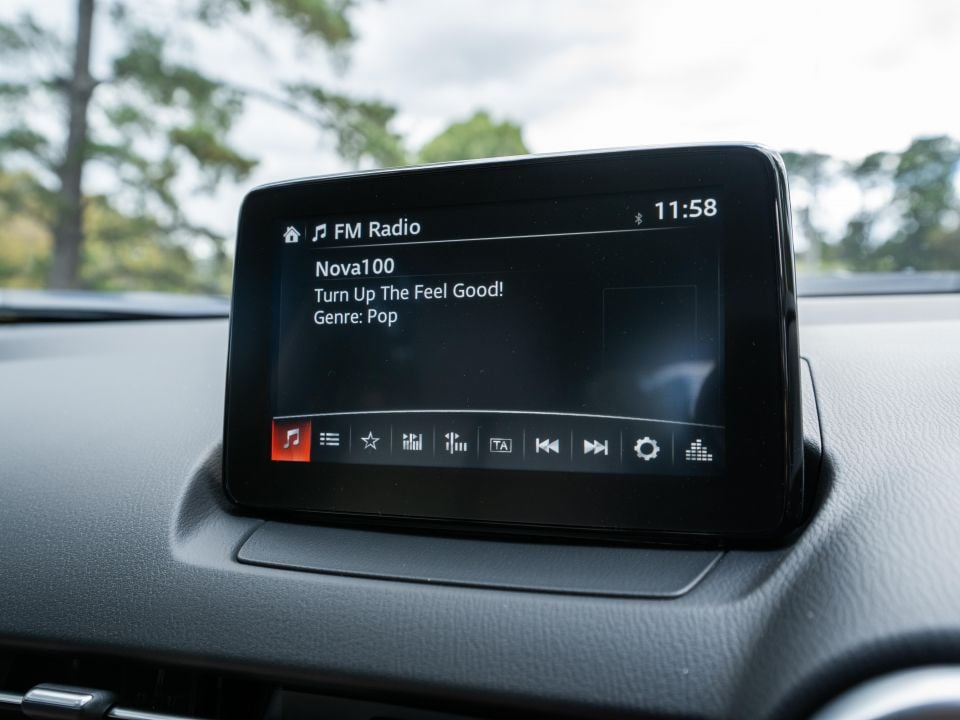
The graphics are getting on a bit, and it’s not the quickest interface when it comes to response, but it’s well featured and for most buyers coming from older vehicles, it’s just fine.
Ahead of the driver is the MX-5 steering wheel introduced as part of the 2017 running update, which still looks good and feels great. The analogue centre speedo dial flanked by dual LCD calculator-style displays is a trademark for low-grade Mazda models – the sports watch-style tacho of higher grades looks much higher end and has aged better over time.
All of the buttons and switchgear feels solid and well damped in operation, and ergonomically it’s all very simple and easy to use.
The white and tan interior trim of this Maxx Sport LE won’t be to everyone’s tastes, but at least it breaks up the usual black and grey colour scheme. I’d probably have the Soul Red Crystal exterior though with this cabin colourway.
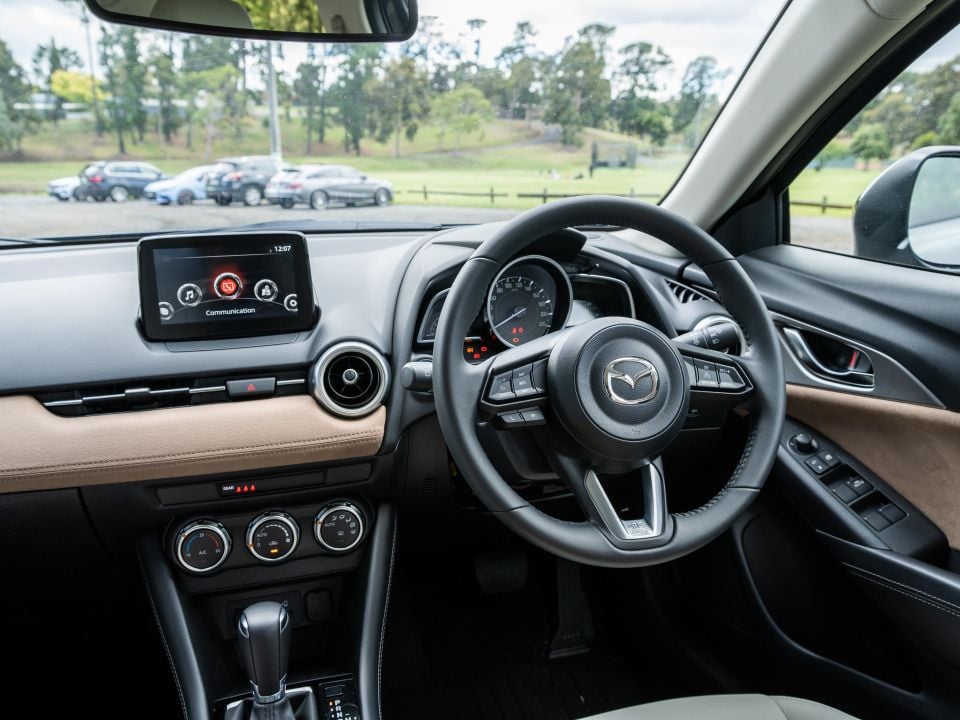
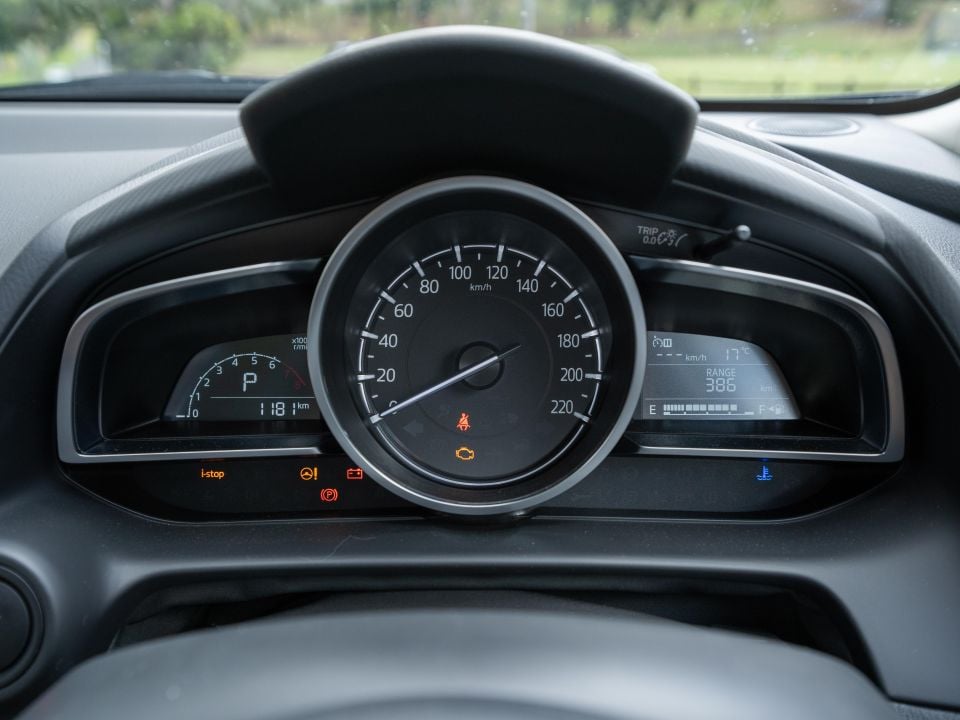
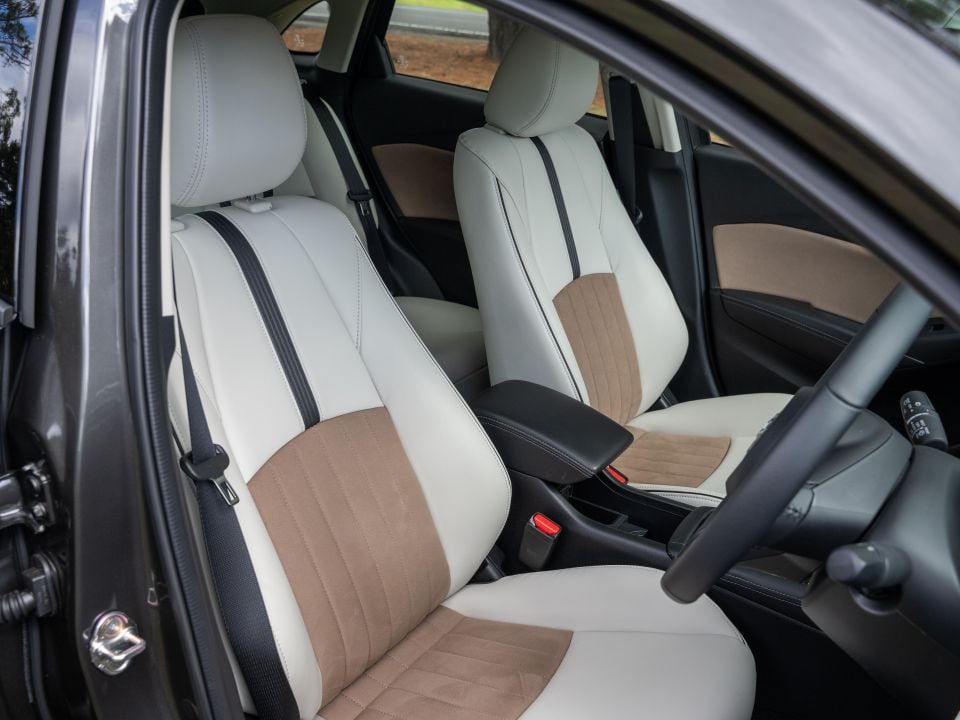
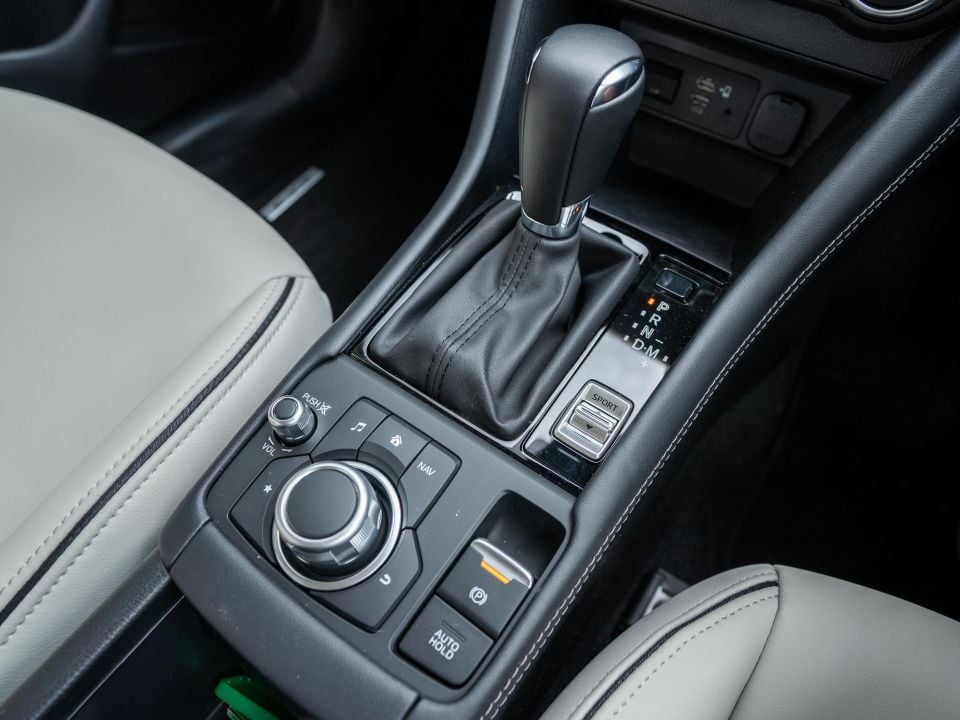
There’s plenty of hard plastics lining the cabin, mixed with padded and fabric-clad surfaces. The overall perception of quality is pretty good, with everything feeling well screwed together.
Up front there’s a good amount of space, though taller drivers may feel like their head is approaching the ceiling. Having someone tall up front will also mean there’s next to no room for average and tall-sized people in the back.
In terms of storage, there’s two cupholders along the centre tunnel with adjustable floor height, and deep door bins that can fit larger bottles.
A cubby under the centre stack is good for wallets and keys or small phones, but clearly wasn’t designed with larger smartphones in mind. If you have your phone connected to Apple CarPlay, you may find it can get in the way of the shifter in P.
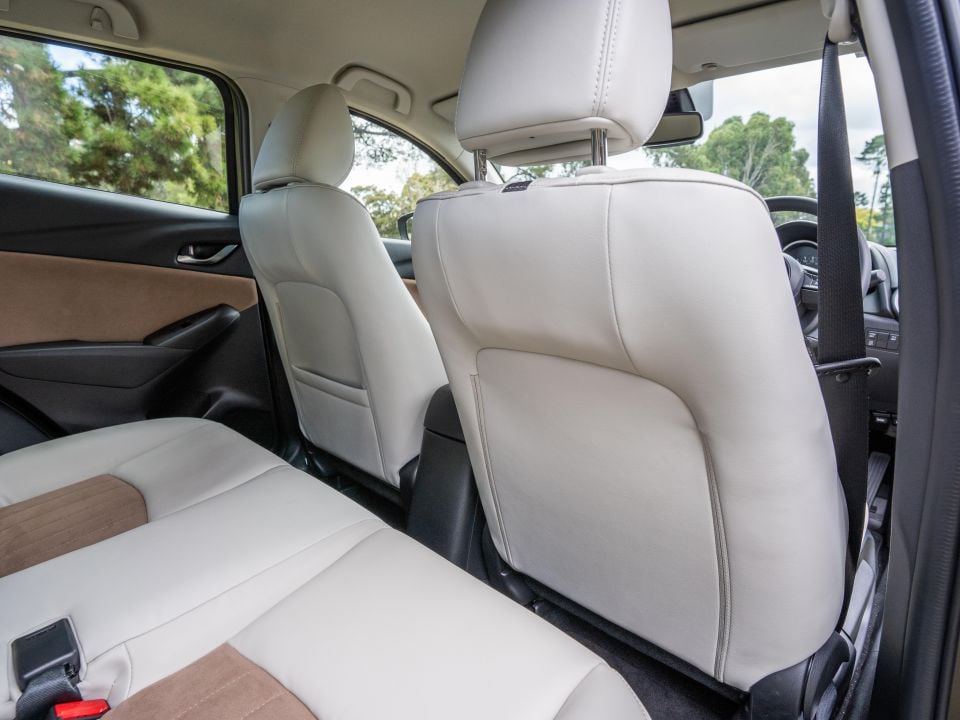
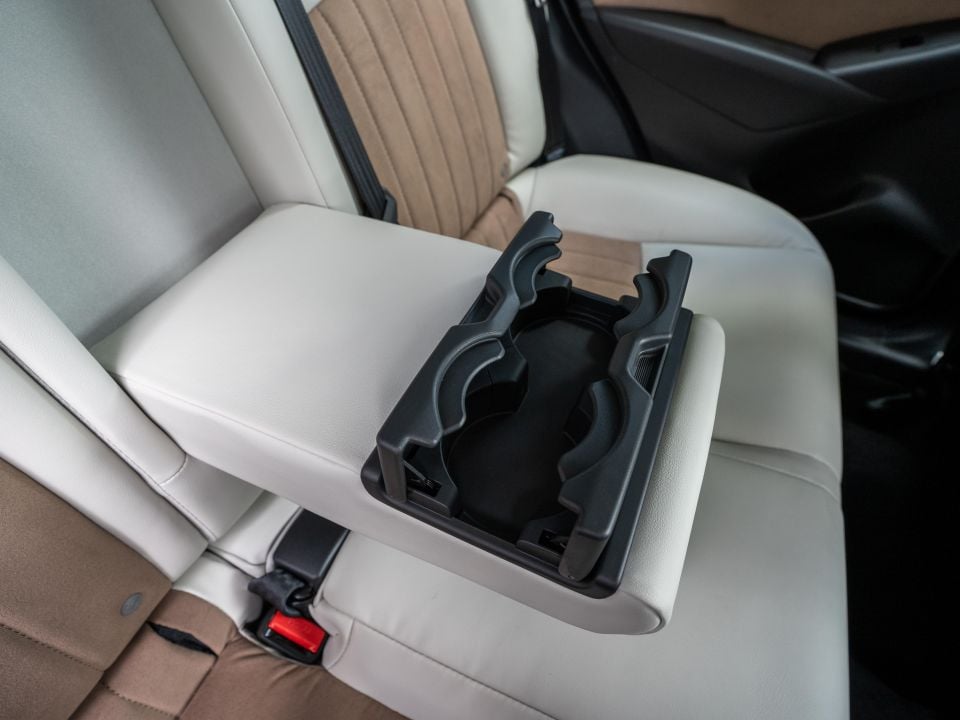

Moving into the second row, long-running complaints remain.
The CX-3 is not very spacious in the back for adults, with limited legroom behind a taller driver, and the upright seatbacks mean it can be a little uncomfortable over long journeys.
Amenities include a fold-down centre armrest with cupholders and bottle holders in the doors, but there’s no rear vents or power outlets. There’s a map pocket behind the front passenger’s seat, but not the driver.
Little ones will be fine back there though, with ISOFIX points for both outer positions, and top-tether points for all three rear seats.
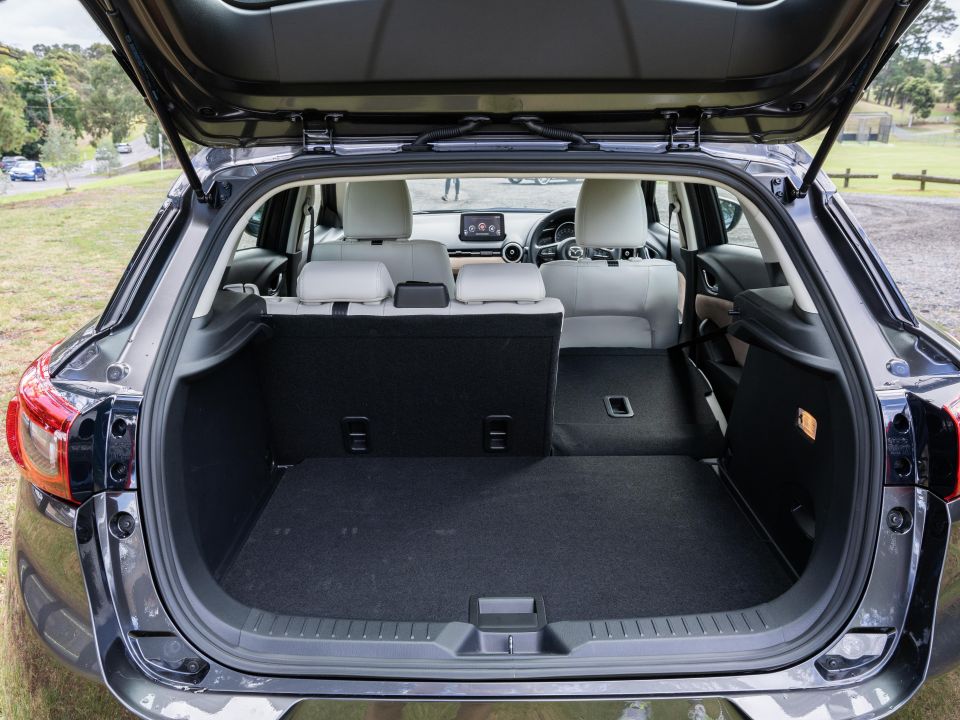
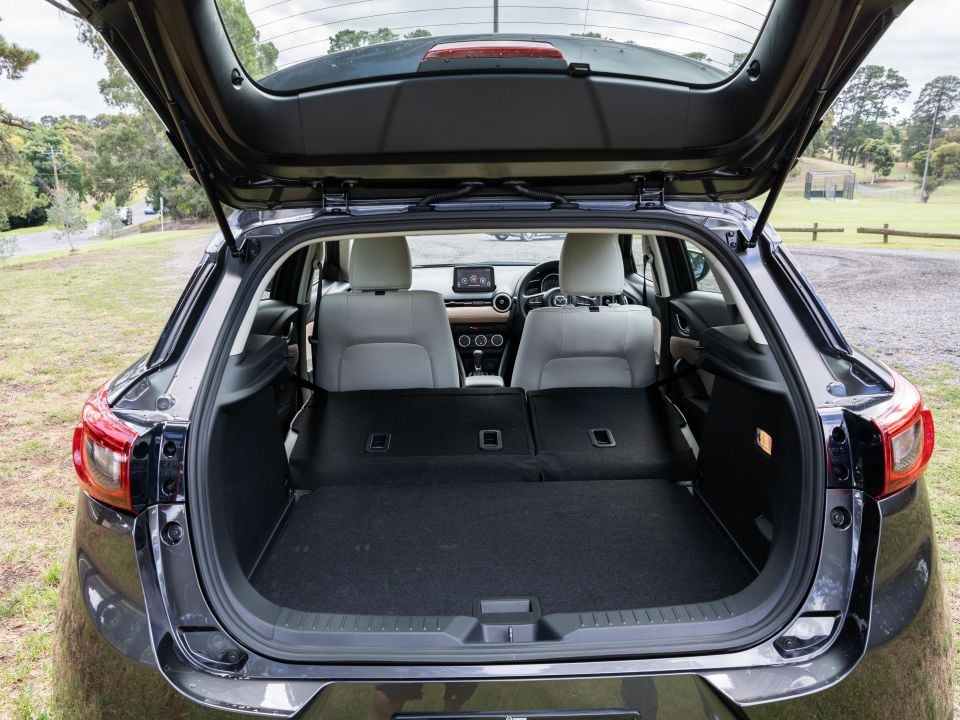
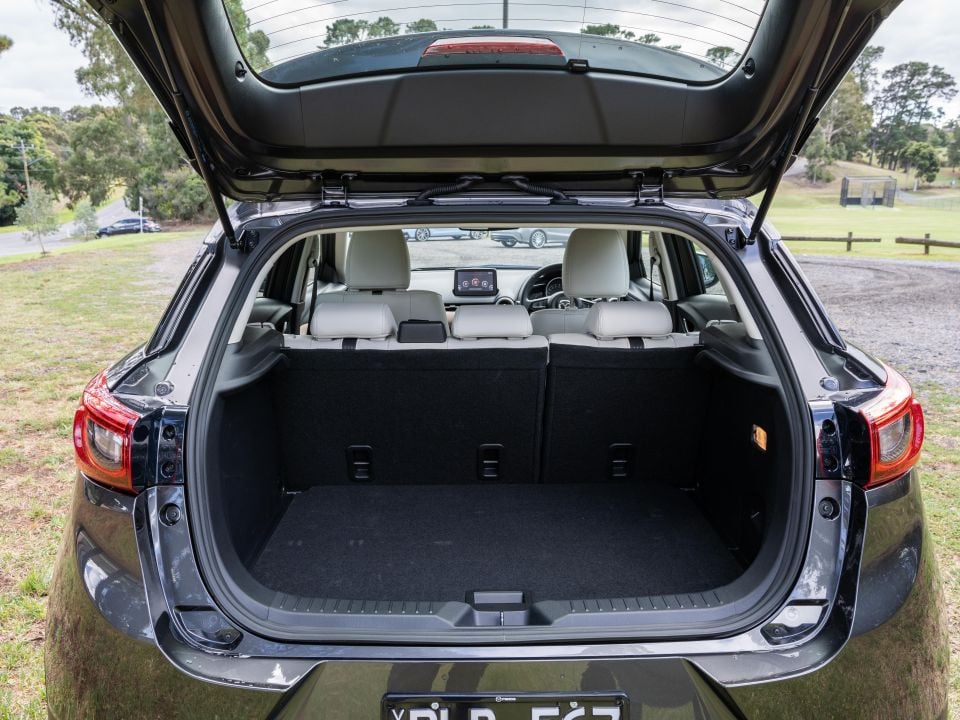
Further back again, and the Mazda CX-3’s luggage area is another sore point compared to the competition.
At just 264 litres the CX-3’s boot is smaller than most rivals, though there’s an adjustable boot floor and the rear seats fold almost flat to open up 1174L.
It’s fine for loading small amounts of sports gear or the weekly grocery run, but if you’re looking for something that can fit prams or lots of luggage on road trips, you may want to look elsewhere.
There’s a space-saver spare wheel living under the boot floor.

The entire 2021 Mazda CX-3 line-up is powered by a 2.0-litre naturally-aspirated four-cylinder petrol engine.
Outputs are quoted as 110kW at 6000rpm and 195Nm at 2800rpm.
Drive is sent to either the front or all four wheels via a six-speed manual or six-speed automatic transmission depending on variant. All-wheel drive versions are exclusively fitted with the automatic.
Fuel use for front-wheel drive automatic models, like the Maxx LE on test, is rated at 6.3L/100km on the combined cycle. All models are fitted with idle stop/start technology and the fuel tank measures 48 litres.
After our week of testing, we saw an indicated 7.5L/100km over a mix of driving conditions, with the bulk of time behind the wheel spent commuting to and from the office in pretty heavy traffic – though my route includes freeway and city stints.
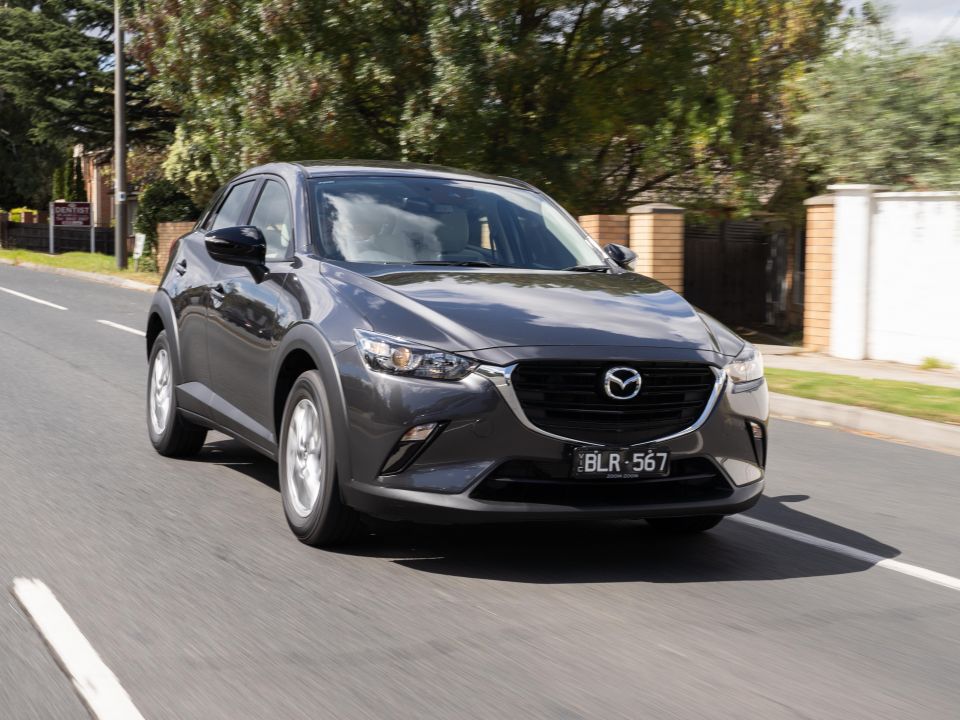
Mazda’s ‘zoom zoom’ philosophy around driver engagement has been a key selling point for a long time now, and the CX-3 holds up in that regard.
The steering, ride and handling are all really engaging and well suited to all-round duties, so it’s no wonder these things have proven so popular with Australian buyers.
Where it’s starting to lag behind though is in terms of performance and refinement. Rivals are moving to downsized turbocharged engines with punchy torque from down low, and while the CX-3’s 2.0-litre motor is a rev-happy unit with decent outputs, it can be a little noisy and thrashy under load.
It’s also a bit noisy on a cold start, which seems to be a trait of Mazda’s current engines. Nothing deal breaking, but it detracts a bit from the brand’s premium approach to design and ambience.
The CX-3 does its best work around town, where its engine doesn’t have to work too hard. It’s comfortable in terms of ride and ambient noise, and its darty handling can make even the most dour of commutes a bit of fun.
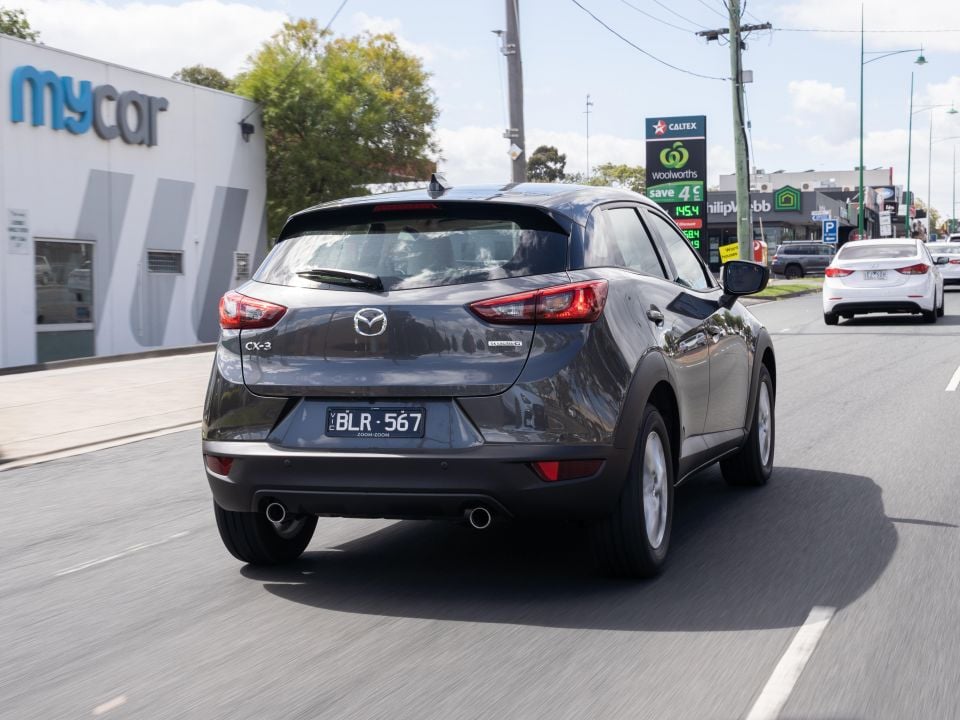
Where expert car reviews meet expert car buying – CarExpert gives you trusted advice, personalised service and real savings on your next new car.
It’s not hard to see why nearly 14,000 Australians bought one of these last year, as it’s a very easy car to live with as a runabout.
On the freeway though, its light starts to dim a bit.
The CX-3 is an older Mazda in the sense the brand hasn’t quite insulated the hell out of it – so tyre roar is noticeable. Note the Maxx Sport LE is on 16-inch wheels and chubby tyres, models with 18s are even worse in this regard.
Mazda’s 2.0-litre Skyactiv-G motor is at the upper end of its abilities on the open road, too. There’s not a whole lot of grunt overtaking and the six-speed auto has the motor spinning at over 2000rpm at a cruise, so it can be a little droney.
It’s a shame Mazda still hasn’t developed a small turbo petrol engine to give the CX-3 (and Mazda 2) an added layer of versatility, or at least kept the torquey old diesel. The effortless grunt from a meatier low- and mid-range would make city commuting more refined and would inspire more confidence at highway speeds. One for the next-gen, probably.
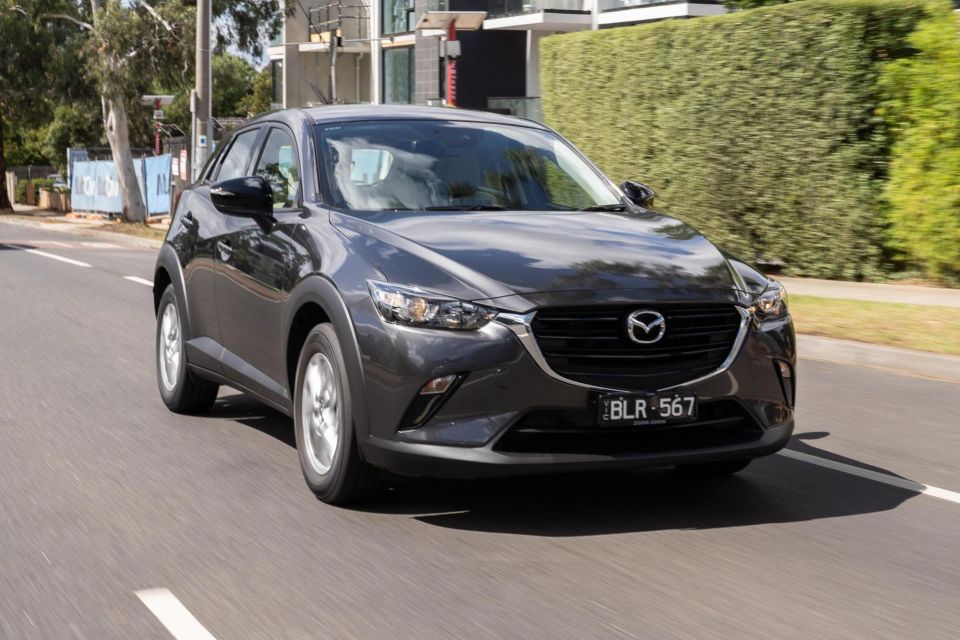
Then there’s the driver assistance tech, or lack thereof.
For roughly $2500 more than the CX-3 Maxx Sport LE we have on test you can have the slightly larger CX-30 G20 Pure, with a similar engine, more space, and a full suite of driver aids such as adaptive cruise control and lane-keep assist as standard, as well as LED headlights and a much nicer interior.
Alternatively, you can have a Mazda 3 G20 Evolve with the above plus luxuries such as dual-zone climate control and 18-inch alloy wheels.
The CX-3 is the only model in Mazda Australia’s line-up to not get standard LED headlights, instead opting for average halogen projector-type front units, and even at $30,000 Maxx LE spec it lacks auto high-beam, lane departure warning, driver attention monitoring, traffic sign recognition and adaptive cruise control.
All these features are available on higher grades of CX-3, and are either standard or optional at this price point from a number of much newer competitors. Not good enough.
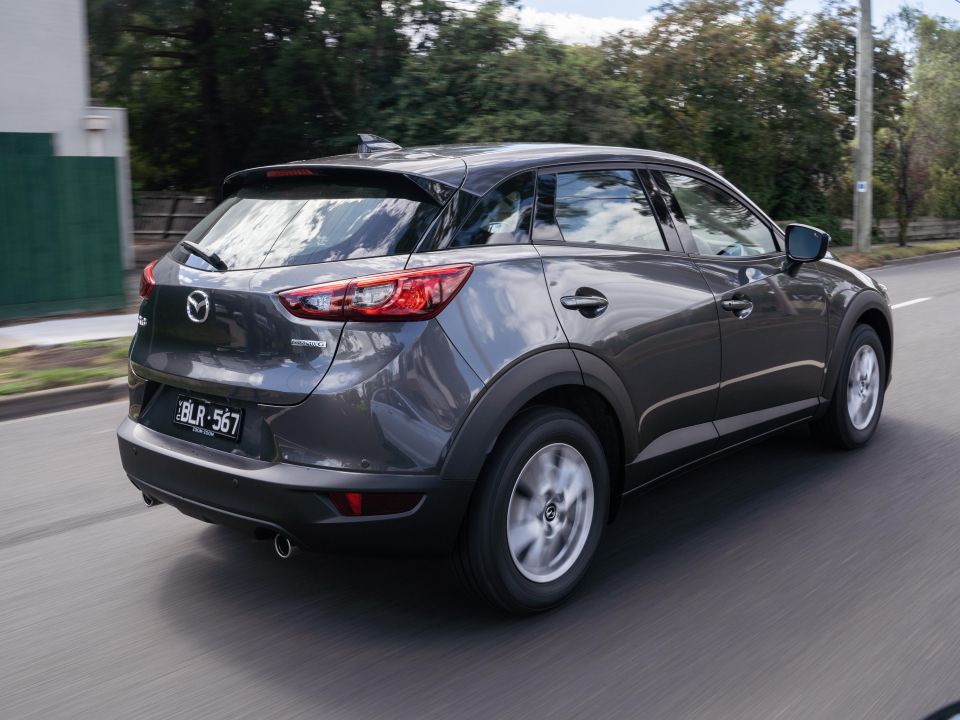
For $500 more (drive-away) than the Maxx Sport LE, you can get the sTouring with LED headlights, daytime-running lights and tail lights, a head-up display, auto high-beam, driver attention monitoring, front parking sensors, traffic sign recognition and lane departure warning. A no-brainer if you ask me.
Specification complaints aside, the bones of the CX-3 still offer an engaging and fun drive on country roads, if a little underpowered and noisy.
The keen steering in town translates to a sporty handler on a winding B-road, with keen turn in and a balanced chassis that’s more fun than a car in this class deserves to be.
Sure, it’s outclassed by the Ford Puma for all-out driver engagement, but given the CX-3’s vintage it shows how good the fundamentals were when the car was launched seven years ago.

The CX-3 is covered by Mazda Australia’s five-year, unlimited-kilometre warranty with roadside assistance.
Scheduled maintenance is required every 12 months or 10,000 kilometres, whichever comes first. Most rivals have 15,000km intervals these days.
According to the company’s website, the first five visits will cost $330, $390, $330, $390 and $330 – totalling $1770 over 60 months or 50,000km.
That’s getting on the higher side of the class when the Toyota Yaris Cross is about $200 per visit, and Skoda Kamiq’s five-year service plan is $1400.
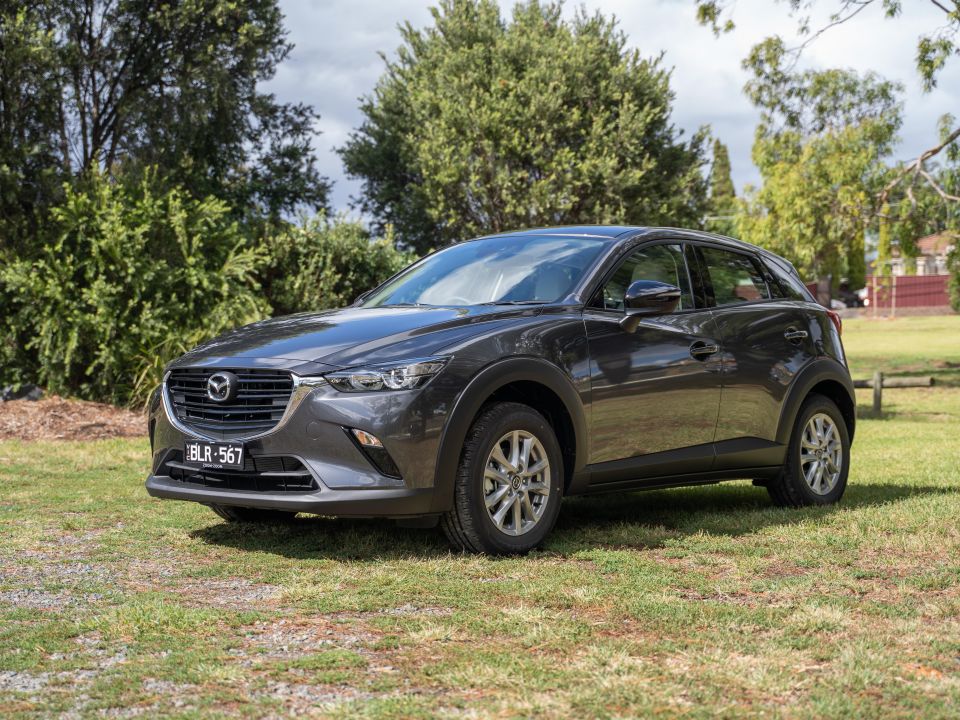
The Mazda CX-3 stays true to what’s made it a fan favourite, but it’s also starting to really show its age as a wave of new competition arrives Down Under.
Ford’s Puma is more fun, Toyota’s Yaris Cross more efficient (especially as a hybrid), and the Skoda Kamiq/Volkswagen T-Cross twins are more technologically advanced.
It’s also down on space compared to the similarly priced Kia Seltos and Mitsubishi ASX, while Mazda’s own 3 and CX-30 make a far better impression with healthier active safety suites and significantly more upmarket cabins.
Yes it still looks good, yes it still drives well, but the CX-3 is best served as the regular Maxx Sport as a price leader or sTouring for value. Even then, rivals make compelling counter arguments.
With one in three light SUV sales being Mazda CX-3s though, I don’t think the brand has much to worry about given an all-new one should be just around the corner.
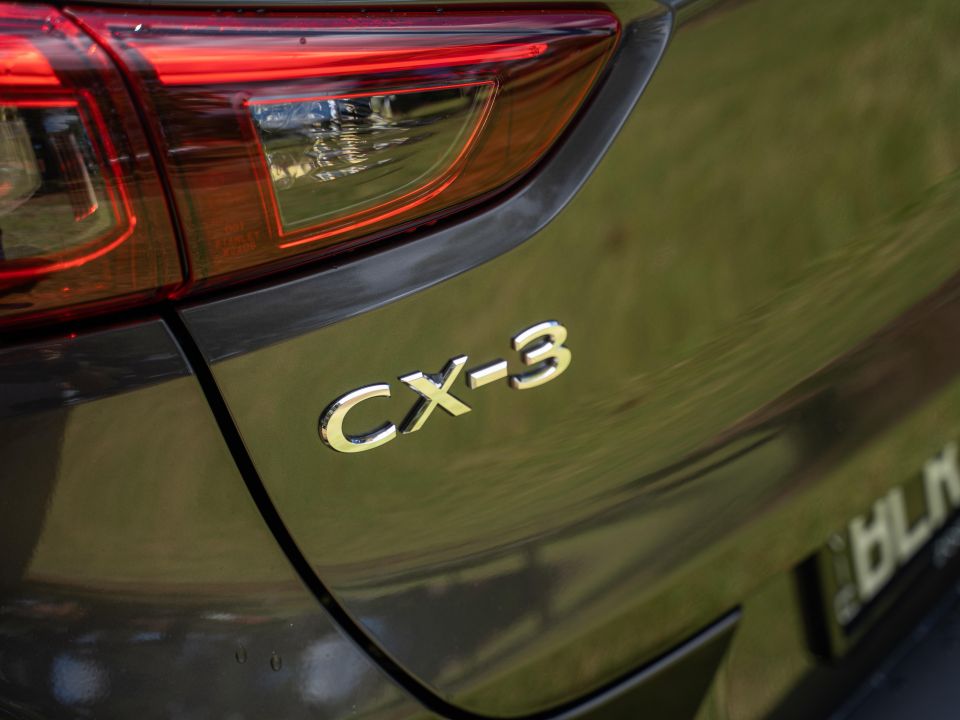
Click the images for the full gallery by Wesley Loh (@garagetribe on Instagram)
Where expert car reviews meet expert car buying – CarExpert gives you trusted advice, personalised service and real savings on your next new car.
James Wong is an automotive journalist and former PR consultant, recognised among Australia’s most prolific motoring writers.


Matt Campbell
6 Hours Ago


Max Davies
22 Hours Ago


William Stopford
22 Hours Ago


Derek Fung
22 Hours Ago


Max Davies
1 Day Ago


William Stopford
2 Days Ago